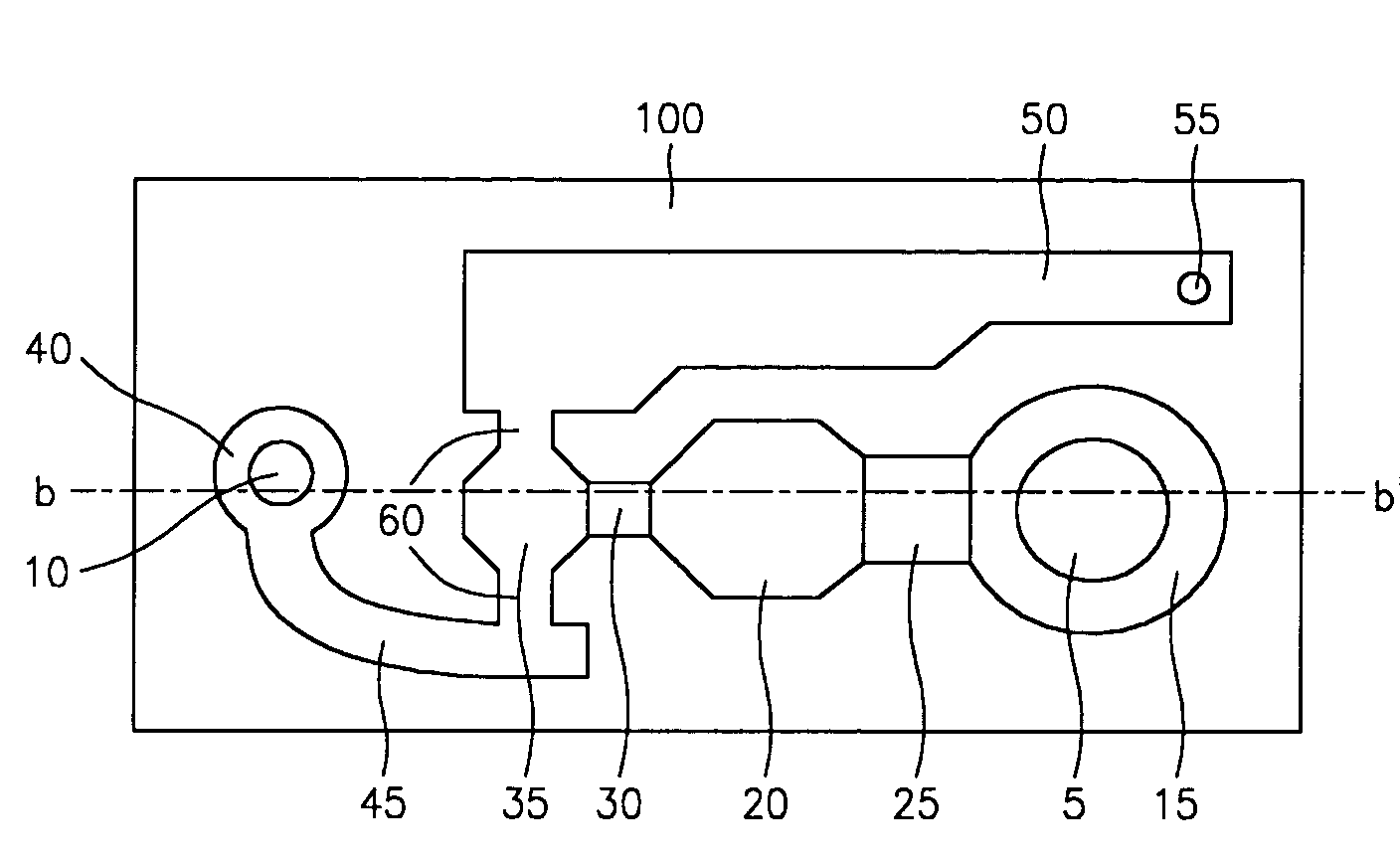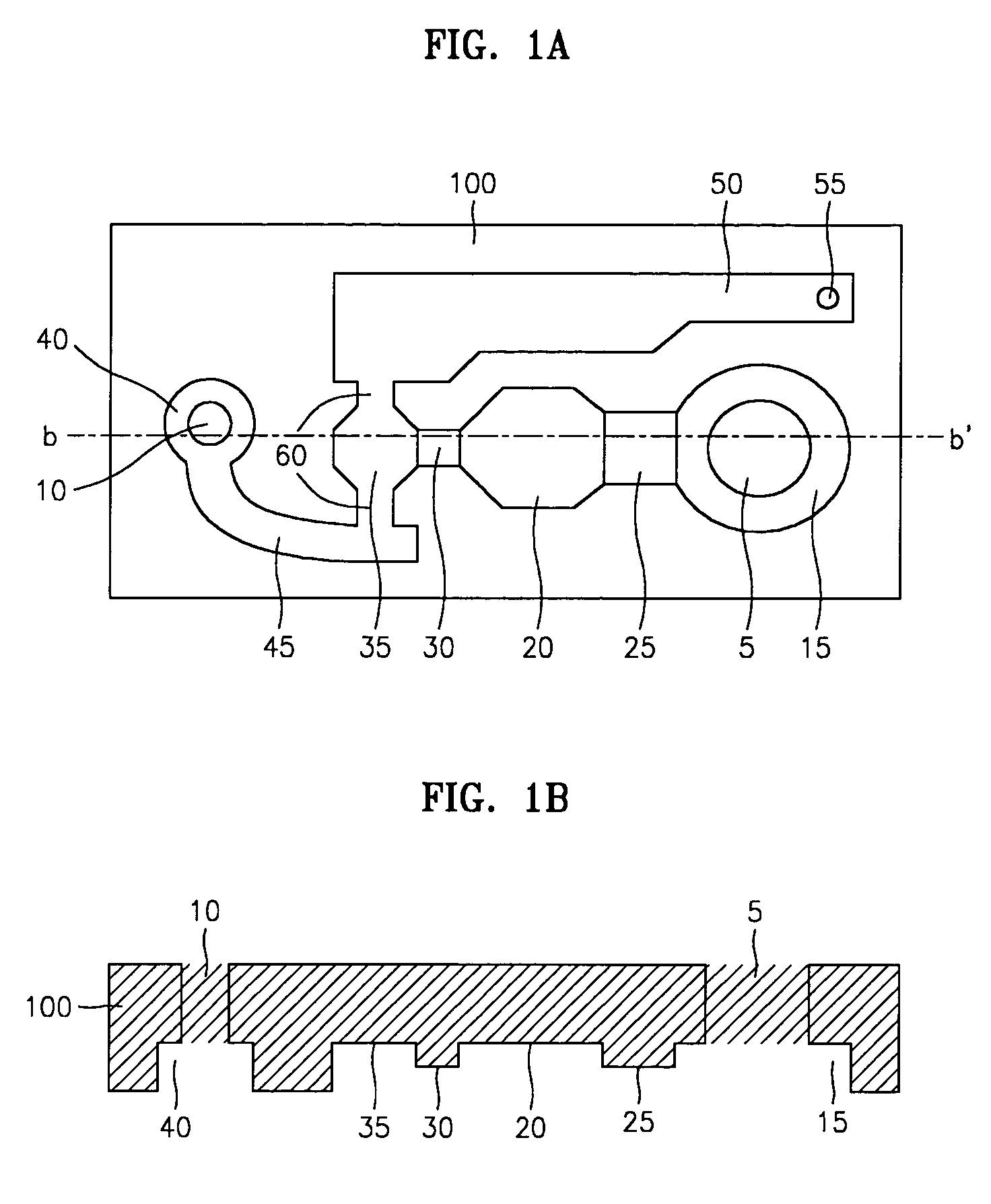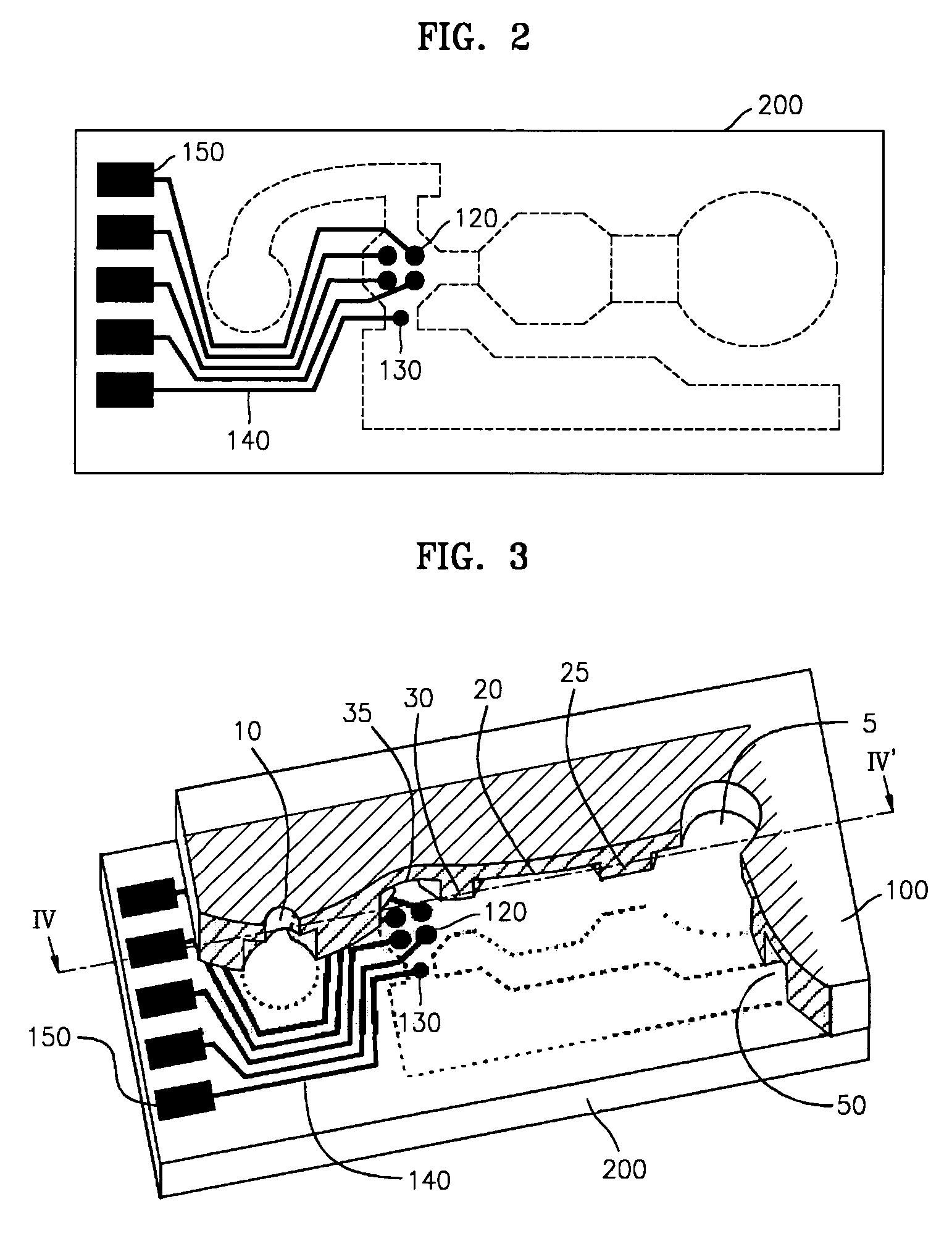Microfluidic device for the controlled movement of fluid
a microfluidic device and fluid control technology, applied in the field of microfluidic devices, can solve the problems that biochips of high performance cannot be implemented exclusively using capillary flow in some applications, and cannot be achieved, and achieve the effect of effective washing away of unnecessary substances and fluid exchang
- Summary
- Abstract
- Description
- Claims
- Application Information
AI Technical Summary
Benefits of technology
Problems solved by technology
Method used
Image
Examples
embodiment 1
[0039]FIG. 1A is a bottom view of a channel substrate of a microfluidic device according to an embodiment of the present invention, and FIG. 1B is a sectional view taken along line b-b′ of FIG. 1A.
[0040]Referring to FIGS. 1A and 1B, holes are formed in a channel substrate 100 as a first fluid inlet port 5 and a second fluid inlet port 10. A first fluid (i.e., a fluid sample) addition chamber 15 is formed at a side of the channel substrate 100. Contiguous with the first fluid addition chamber 15, a sample reaction barrier 25, a reaction chamber 20, a time gate 30, and a sensing chamber 35 are sequentially formed. A sample injected into the first fluid inlet port 5 is flowed through the first fluid addition chamber 15, the sample reaction barrier 25, the reaction chamber 20, and the time gate 30 into the sensing chamber 35 by capillary force.
[0041]The first fluid addition chamber 15 should be large enough to accommodate the sample injected through the first fluid inlet port 5 in an am...
embodiment 2
[0048]FIG. 5 is a sectional view of a microfluidic device according to a second embodiment of the present invention. This second embodiment is similar to the first embodiment described above, with the exception of how the channel substrate 100 and the sensing substrate 200 are assembled.
[0049]The first embodiment is described as an example of applying the adhesive material 290 between the channel substrate 100 and the sensing substrate 200 to bind them together. In addition to the method of using the adhesive material 290, the channel substrate 100 and the sensing substrate 200 can be bound together by fitting projections formed on one of the substrates into grooves formed on the other.
[0050]In FIG. 5, projections 100a formed on the channel substrate 100 are fitted into the grooves 200a formed on the sensing substrate 200. When binding the channel substrate 100 and the sensing substrate 200 in this manner, an elastic polymer pad 292 may be additionally placed at contact sites of the...
embodiment 3
[0051]FIG. 6 is a plan view of a channel substrate of a microfluidic device according to a third embodiment of the present invention. This embodiment is a modification of the first embodiment for the channel substrate 100 of FIG. 1A.
[0052]Referring to FIG. 6, the reaction chamber 20 and the time gate 30 of FIG. 1A are eliminated in a channel substrate 105 so that the first fluid addition chamber 15 and the sample reaction barrier 25 are directly connected to the sensing chamber 35. Capillarity that induced natural fluid flow up to the sample reaction barrier 25 is not exerted any more when the fluid reaches the sensing chamber 35 having appreciably large outlets 60.
PUM
| Property | Measurement | Unit |
|---|---|---|
| contact angle | aaaaa | aaaaa |
| capillary force | aaaaa | aaaaa |
| time delay | aaaaa | aaaaa |
Abstract
Description
Claims
Application Information
 Login to View More
Login to View More - R&D
- Intellectual Property
- Life Sciences
- Materials
- Tech Scout
- Unparalleled Data Quality
- Higher Quality Content
- 60% Fewer Hallucinations
Browse by: Latest US Patents, China's latest patents, Technical Efficacy Thesaurus, Application Domain, Technology Topic, Popular Technical Reports.
© 2025 PatSnap. All rights reserved.Legal|Privacy policy|Modern Slavery Act Transparency Statement|Sitemap|About US| Contact US: help@patsnap.com



